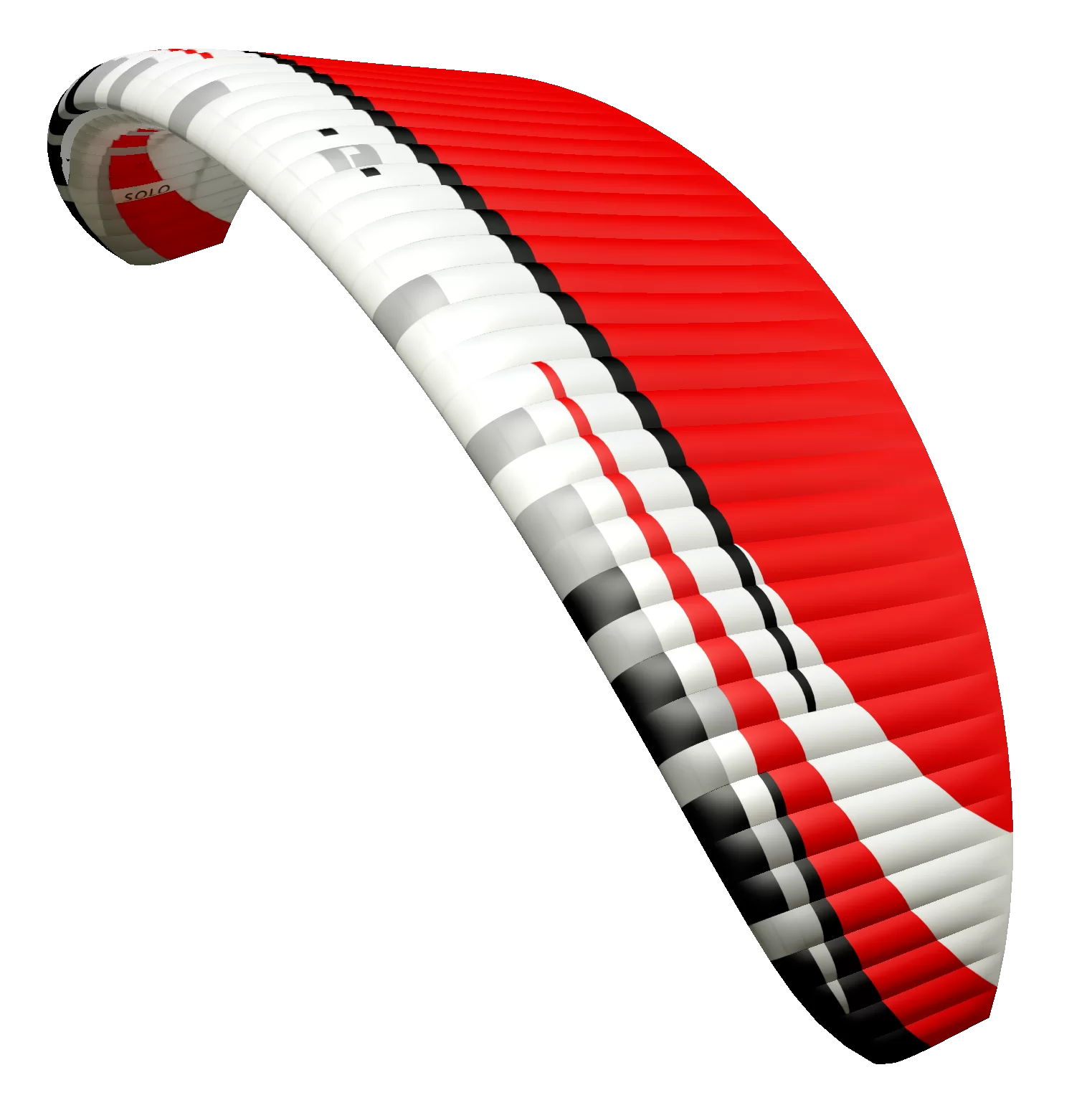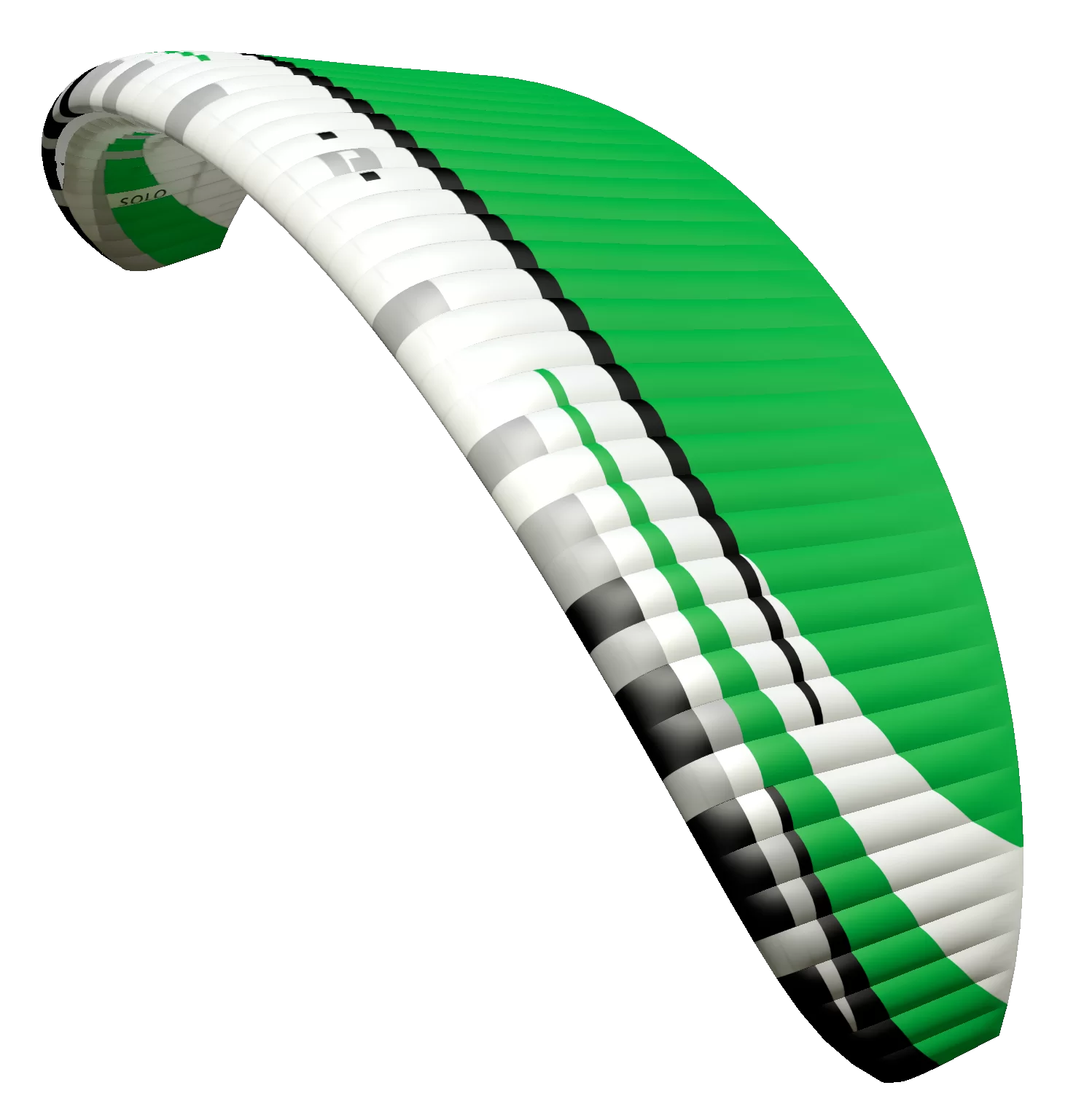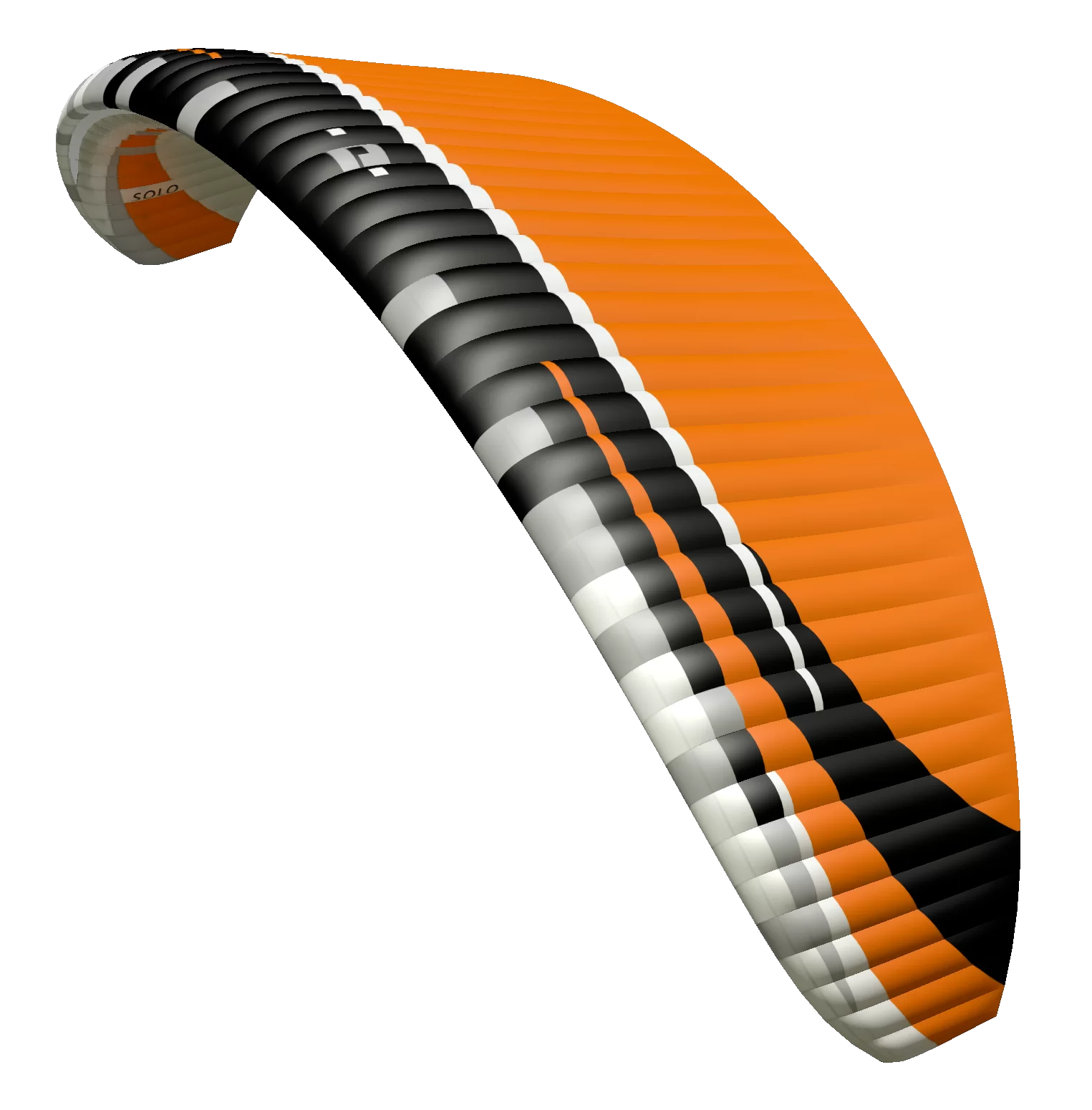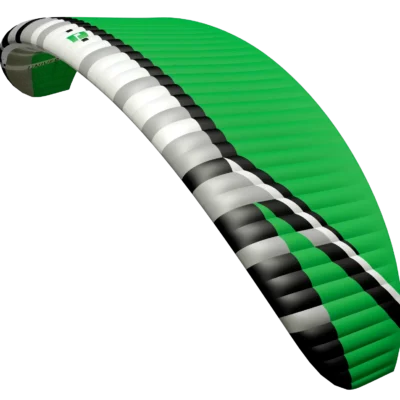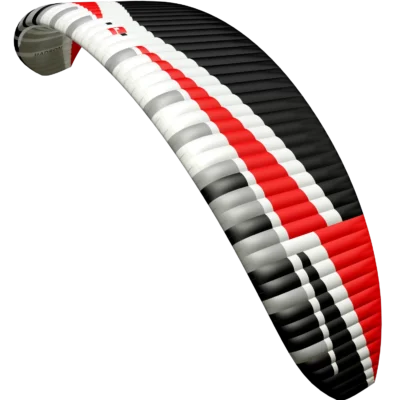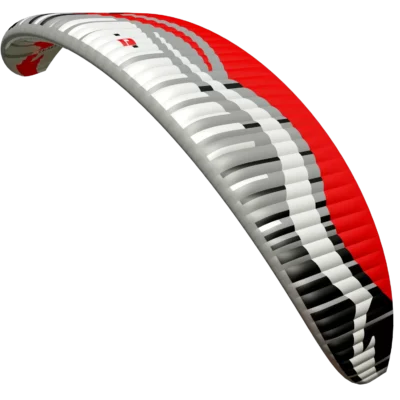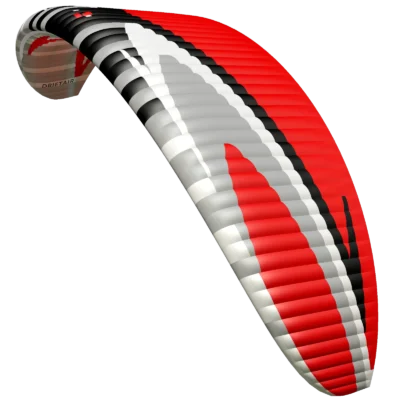Solo – Dudek
$3,800.00
Solo is a beginner and intermediate reflex paraglider for single place fun/XC flying with a paramotor or a light trike. It’s design allows for safe gathering experience at thermalling.
It is robust, stable and offers good lift.
Design
- The canopy has been designed in our CSG system (Canopy Shape Guard), which consists of several subsystems guaranteeing exceptional coherence of the canopy shape and its extended durability.
- Adjustable reflex airfoil of the paraglider is based on our flagship DRA concept (Dudek Reflex Airfoil), duly optimized using special CFD software.
- The intakes of Shark-nose technology
- The Solo is made with the Flexi-Egde technology – the precise shape of the leading edge is kept with laminated cloth reinforcements, incorporating synthetic rods. These rods considerably improve launch quality, as well as keep deformations away at high speeds.
- Careful selection of modern fabrics and design solutions brings about maximum reliability, strength and durability. All materials come from numbered production batches, and each production step can be verified down to identification of specific worker and controller.
The Solo is manufactured in technology utilizing precision of the laser cutter. All stages of production process take place in Poland under strict supervision of the designer himself, thus ensuring highest European quality.
Design solutions, technologies and other functionalities are listed below in the Technologies section.
Parameters
Weight ranges
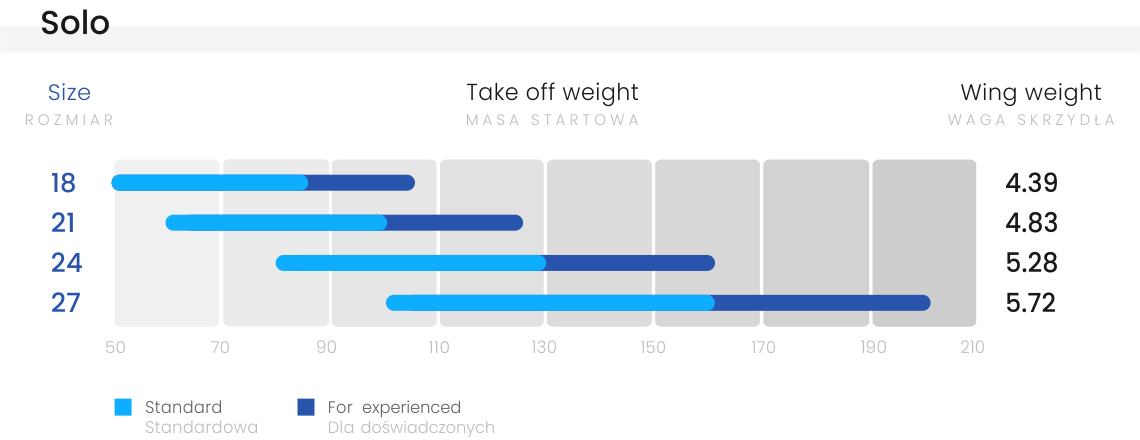
TECHNICAL DATA
| Name – size |
Solo 18 | Solo 21 | Solo 24 | Solo 27 |
| Approval – ULM identification | – | yes | yes | yes |
| Number of cells | 53 | |||
| Wing area flat [m2] | 18.00 | 21.00 | 24.00 | 27.00 |
| Wing area projected [m2] | 15.30 | 17.86 | 20.41 | 22.96 |
| Wingspan flat [m] | 9.86 | 10.65 | 11.38 | 12.07 |
| Wingspan projected [m] | 7.84 | 8.47 | 9.05 | 9.60 |
| Aspect ratio flat | 5.4 | |||
| Aspect ratio projected | 4.02 | |||
| Sink rate [m/s] | min = 1.2; (+/- 0.2 m/s) | |||
| Speed* [km/h] | min = 23, trim = 39-50; max = 61 (+/- 3 km/h)* | |||
| Distance pilot to wing [m] | 5.91 | 6.39 | 6.83 | 7.24 |
| Total line lenght [m] | 298,82 | 323,67 | 346,81 | 368,53 |
| Canopy weight [kg] | 4.39 | 4.83 | 5.28 | 5.72 |
| Take-off weight** [kg] | 50-85** | 60-100** | 80-130** | 100-160** |
| Max take-off weight – for experienced*** [kg] | 105*** | 125*** | 160*** | 200*** |
| Distance between risers [cm] | 45 | 45 | 45 | 45 |
| Load test [kg] | 288 kg at 5.25 G | |||
| Lines | A-8000U: 050 / Technora: 90; 140; 190; 280; 340 / Dyneema: 350 | |||
| Cloth | Porcher Sport 38 g/m2 Dominico Tex 34 g/m2 Porcher Hard Finish 40 g/m2 SR-Scrim, SR Laminate 180 g/m2 |
|||
* Speeds are given as estimated for the middle wing size and the middle of its weight range. These speeds can vary within +/- 3 km / h depending on the size, take-off weight and additional factors such as air pressure and temperature.
** The basic rule is to choose the size of the wing so that the take-off weight is in the middle of the weight range. Less weight on the wing (lower range take-off weight) can be considered for foot take-off, when flying in calmer conditions, or when we want to improve economy. More experienced pilots who want to fly dynamically, have higher speed and fly in more demanding wind conditions can consider greater wing loading (take-off weight in the upper range). This is a common option among trike users.
*** Note – the canopy significantly changes its behavior with increasing wing loading. The greater the loads, the greater skill and concentration of the pilot are required.
| Weight | N/A |
|---|---|
| Color | Tango, Salsa, Calypso |
| Size | 18, 21, 24, 27 |
Related products
-

Universal 1.1 – Dudek
$3,700.00 Select options This product has multiple variants. The options may be chosen on the product page -

Hadron 3 – Dudek
$4,100.00 Select options This product has multiple variants. The options may be chosen on the product page -

Snake 3 – Dudek
$4,500.00 Select options This product has multiple variants. The options may be chosen on the product page -

DriftAir – Dudek
$4,000.00 Select options This product has multiple variants. The options may be chosen on the product page

